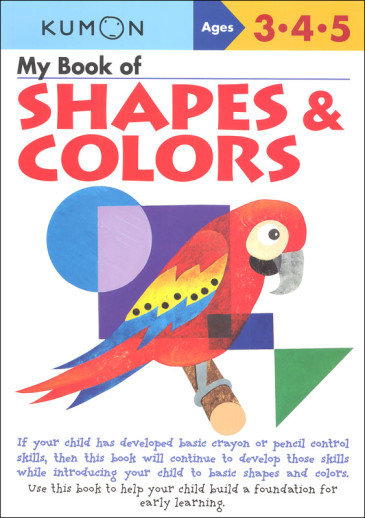We use cookies to make your experience better. To comply with the new e-Privacy directive, we need to ask for your consent to set the cookies. Learn more.
My Book of Shapes and Colors
This workbook from Kumon introduces shapes and colors through a variety of tracing and coloring activities. Throughout the book, children will learn to create ten different shapes and identify eight different colors. A certificate of completion is included at the back. 78 pages.
My Book of Shapes and Colors is designed to help children learn and identify common shapes and colors while also developing their fine motor and early math skills. The ability to identify typical shapes like circle, square, triangle, and others is an important skill for your child to practice and develop. Not only is the ability to identify shapes an early geometry skill, but it can also help your child develop early problem solving skills. The ability to identify common colors is also an essential skill for your child. By developing these skills together your child will build a strong foundation for early learning.8 ¼ × 11 ? inches. paperback. 80 pages. full color.
I must say that these are very nice looking workbooks. Each 80-page workbook is printed on high-quality paper made especially for children learning how to write. The cute, highly-detailed illustrations, which are gorgeously colored, are also rather appealing. Looks aside, these workbooks are designed to encourage self-acquisition of skills. The Kumon approach of incremental mastery also fosters increased self-confidence in children. ~ Anh


To help my new kindergartner with fine motor skills and his shapes
My grandsons are 3 & 4 years old